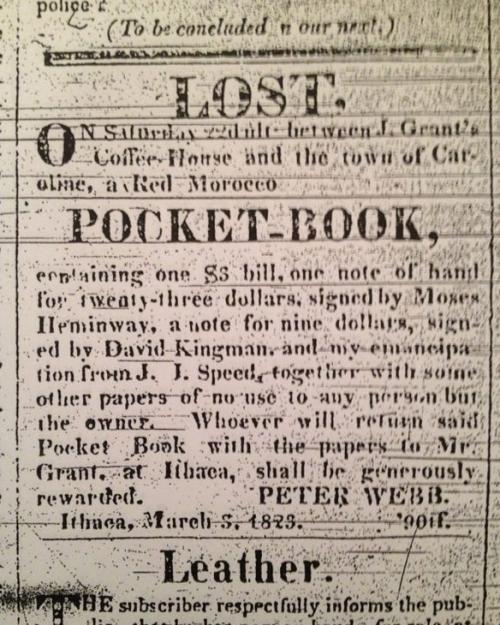"When the night of our escape came, I laid on the ground next to my sister wide awake, waiting to hear the seven knocks that would signal our time of departure. I laid there and prayed. I prayed that my sister and I would be free at last, together, as my mother wished for us.”
So begins the story of Gloria Jones, a fictional freedom seeker whose story is one of many that can be heard on the new “Voices on the Underground Railroad” website, a collaborative effort between graduate students, undergrads, students in the Milstein Program in Technology and Humanity and community members.
The website focuses on nine documented or rumored stops on the Underground Railroad in Central and Western New York. Students in the Africana Center’s Underground Railroad seminar and last spring semester’s Rural Humanities seminar spent months researching slave narratives, the history of the railroad and each specific site before creating their pieces, which speak from the point of view of a freedom seeker traveling the route.
“There are so few narratives about what it was like to be a freedom seeker on the Underground Railroad, so I felt this deep sense of responsibility,” said Jehan Roberson, a doctoral student in Literatures in English, who said she chose to focus her story away from the violence that is typical of the slave narrative genre.
Roberson tried to travel to visit the house she was writing about, but it’s since been torn down and replaced with new construction, so she relied on accounts that described it as having carvings in a mantle, prompting her to focus on symbols, and eventually quilting, in her story.
“It was so overwhelming and impossible to put ourselves in these people’s shoes, but we wanted to make their experiences visible,” she said. “This project is a call for empathy, as well as for understanding what the continued impacts of these experiences are for the descendants of enslaved people and for other marginalized people.”
The website also includes photographs, maps and video of each location and a list of resources to learn more. The site is part of Professor Gerard Aching’s Underground Railroad Research Project, which is supported by an A&S New Frontier Grant. The project includes an archaeological dig at St. James AME Zion church and other components.
“Even though the pandemic hit our communities hard in 2020, it was also at that time that new collaborations emerged between campus partners, such as the Milstein program, ongoing research and experiential learning projects on the Underground Railroad, and our community partners,” Aching said. “The website would have taken longer to create without the opportunity and engagement that arose just then.”
As the site was being envisioned, undergrads in the Milstein program worked with voice actors from Ithaca’s Civic Ensemble to record the narratives, then they added music and sound effects and edited those pieces. They also helped create initial design ideas for the overall look of the website, contributed graphics and uploaded all of the content a shared folder, for the web designer.
“I came into this project with only basic knowledge about the railroad, so it was a great opportunity to learn more about it while also applying technical skills to the project,” said Andres Murillo ’24, an economics major who helped with mapping and photo design and editing. “My hope is that the website can continue growing and expanding the list of locations of the railroad.”
Julia Beitel ’24, an information science and environment and sustainability studies major, was part of the audio team.
“Throughout the semester, we worked to improve our literacy with various pieces of tech like Adobe Audition and Garageband so that we could produce our own audio pieces. I had never worked so heavily on audio editing, so it was a great learning experience for me,” she said. “Each person in our group took their audio pieces in a different direction and being able to collaborate and share ideas with other members was helpful as everyone brought something new to the table.”
Ithaca design firms Iron Design and AWP worked with students to create the final website design, Bert Odom-Reed of Cornell’s broadcast studios helped refine and produce one of the more complicated recordings and Shira Evergreen ‘02, owner and founder of Uplifted Ithaca, provided drone photography and video for the site.
“Some of these houses have historical markers, maybe related to the Underground Railroad but some are just houses on a street,” Evergreen said. “We walk down our streets and we don’t realize the history there.”
Researching the locations before each shot, Evergreen said she approached each location cinematically. “At Griffith Cooper House, I filmed slowly toward the back door, giving a feel of what it would have been like to inhabit this space or approach this space from the woods.”
Aching said the website will continue to grow. “Now that our collaborations have made the website a reality, we want to continue providing students with a platform for approaching this important phenomenon in American history through informed reflection and storytelling,” Aching said.





